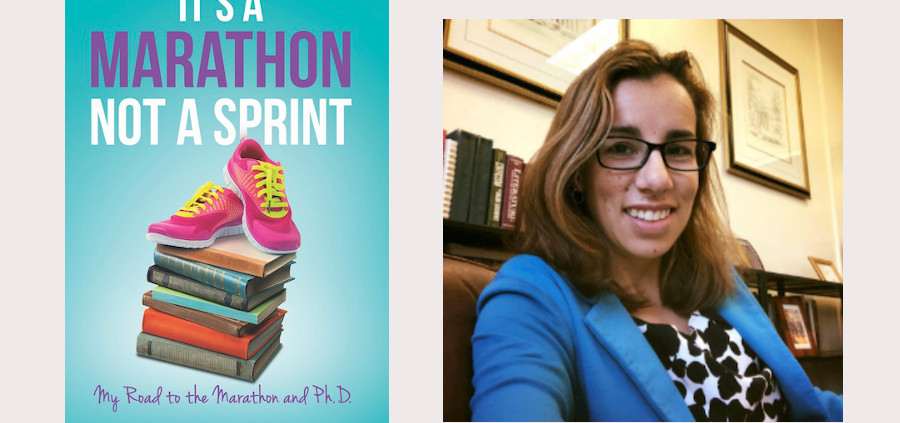Writing, Running, Representations of Mary: Vanessa R. Corcoran on Her New Memoir
Vanessa R. Corcoran is currently an advising dean and adjunct professor of history at Georgetown University. She earned her Ph.D. in medieval history from the Catholic University of America, an experience she drew on for her essay “Five Years with the Virgin Mary: An Academic Pilgrimage,” published in 2019. She lives in Washington, D.C., with her husband Patrick and their daughter, Lucy.
Vanessa recently released her first book, the memoir It’s a Marathon, Not a Sprint: My Road to the Marathon and Ph.D. Her story follows her Catholic upbringing, her time in graduate school, and her research on medieval devotion to the Virgin Mary. She details how running helped her overcome a lifelong struggle with anxiety and provided the peace and stability to complete her long-term goals. We are pleased to share a video interview about the book along with a brief excerpt below—Ed.
♦ ♦ ♦
After spending a semester reading medieval sources about the Virgin Mary, I started to observe some interesting patterns in these devotional sources. As a lifelong Catholic, I loved looking at images of the Virgin Mary while I was sitting in the pews during Mass. I typically envisioned her as the maiden who quaked at the sight of the angel Gabriel at the Annunciation, or the young mother looking over the infant Jesus in Nativity scenes. On the contrary, these miracle collections depicted Mary as a strong woman, and when combating forces of evil, her words and behavior could be described as vengeful.
For example, in his twelfth-century Miracles of the Virgin Mary, a monk named William of Malmesbury wrote that Mary beat the devil with a stick, “redoubling her blows and making them sharper with words, ‘Take that, and go away. I warn you and order you not to harass my monk any more. If you dare to do so, you will suffer worse.’” I was flummoxed. This powerful depiction of Mary was in stark opposition to the obedient woman who said at the Annunciation, “Behold the handmaid of the Lord: be it done to me according to thy word.” After reading this, I wrote in my notebook, “These stories, which demonstrate Mary not as a compassionate intercessor, but as a potent intermediary, can also show the emerging complexity of the medieval understanding of Mary.” Perhaps this was enough of an insight to launch a new topic.
At the end of April, Dr. Sherman organized a workshop for students working on dissertation proposals. As I spoke about what I observed in the miracula, she asked “What does it mean when Mary speaks?” This question gave me a lot to think about as I started to move deeper into my research. I was confident this was the project that would be the ticket to my Ph.D. ♦





Leave a Reply
Want to join the discussion?Feel free to contribute!